DESIGN SWARM 2017 | Columbus, Ohio
What is a Design Swarm?
"This facilitated approach to examining complex social problems relies on the collaborative power of people from different disciplines, backgrounds, and levels of experience. Surya Vanka, founder and principle of Authentic Design (Seattle) and former UX director at Microsoft, will lead us through a nine hour, two-day workshop process based on sessions that function as timed sprints that may feel like controlled chaos, but the proactive sense of urgency they generate is leveraged to generate a wide range of highly visual and collaborative proposals for innovative new ways to solve challenges that have a strong sense of local relevance. By bringing together people with different points of view to share ideas, the process encourages the exploration of extremes: extreme agility, extreme creativity, and extreme collaboration. In the end, Design Swarms have a proven ability to identify connections, processes and previously unseen possibilities to solve some of today’s biggest challenges."
This was an interesting and intensive design research process that allowed massive number of ideas to be generated in the process by working with the organizers and the two blank maps they provided. But before we got into that work room, we got acquainted with our team members (through a group email) by addressing three main questions:
Who are you, what do you do, and where do you work?
What are you passionate about?
What are you good at (What’s your superpower)?
With initial bonding and familiarity, it was easier for us, as a team to transition into work mode and apply each of our strength's to the design process. The first part in this Design Swarm was making ourselves familiar with the secondary research about the Opioid Crisis in Ohio.
THE SECONDARY RESEARCH ROOM or THE 'EMPATHY' ROOM


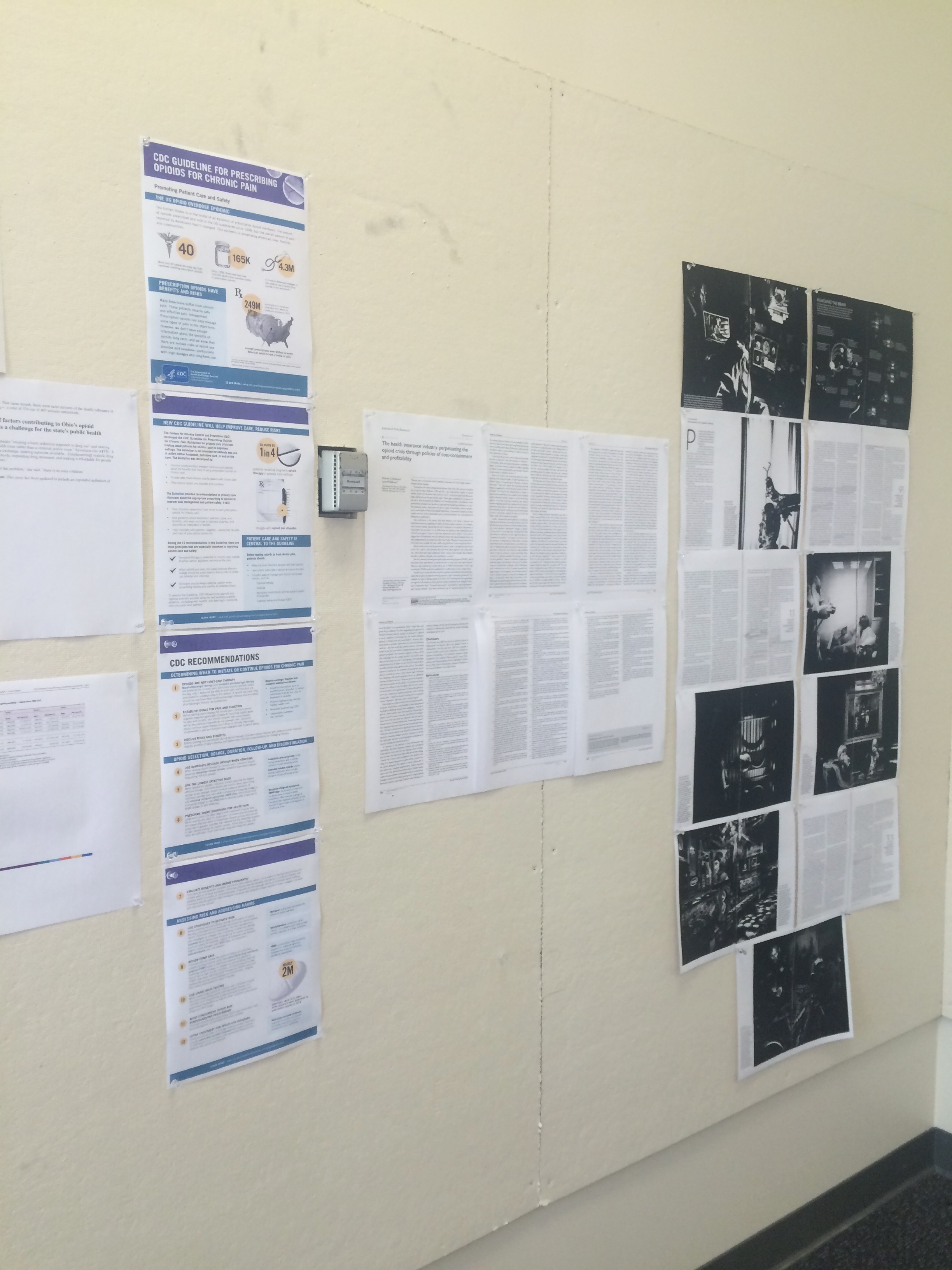


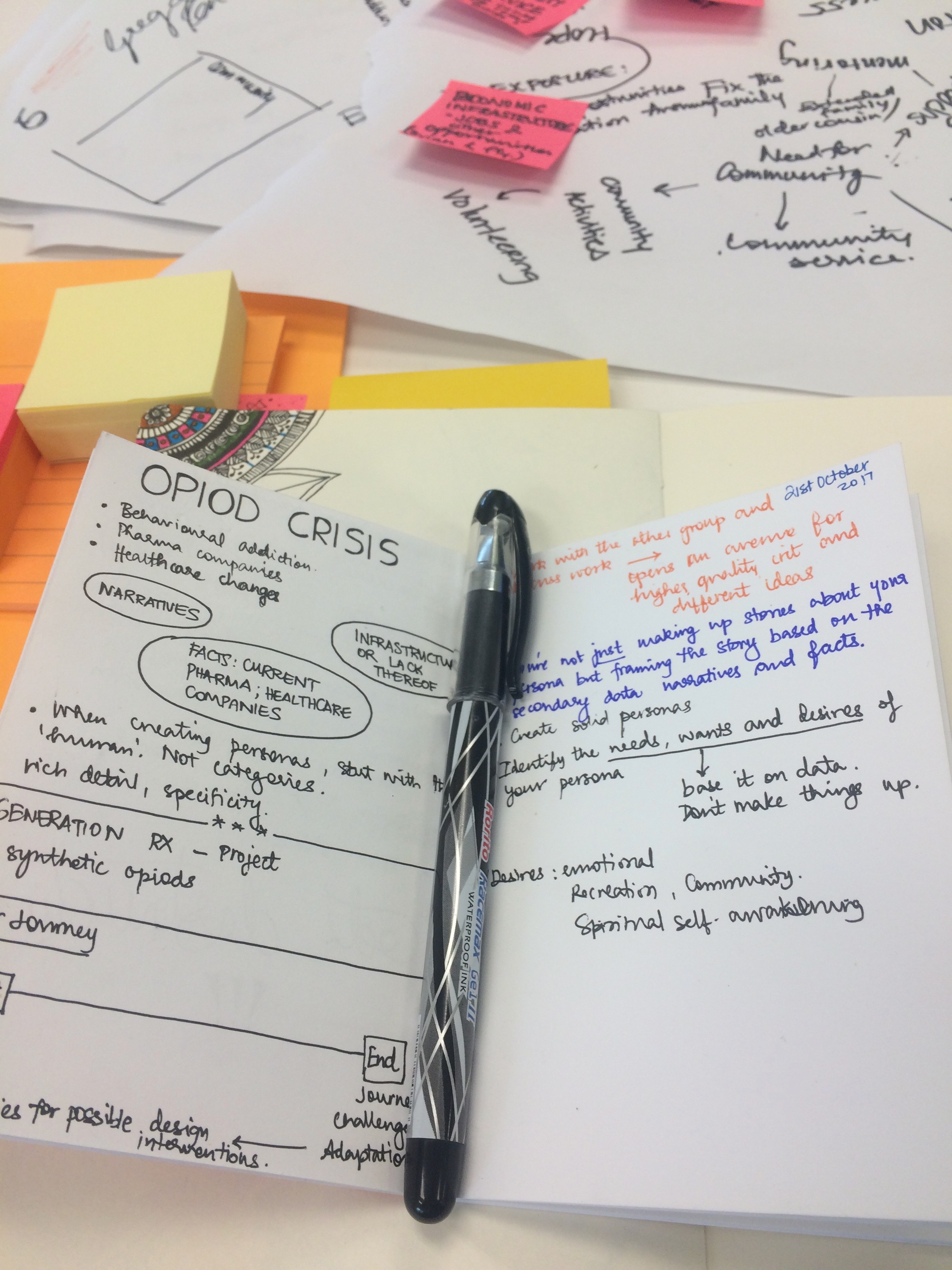
Usually, design research calls for a chunk of time in the process and schedule to work on secondary research and literature reviews where information-gathering happens. Given that this was an intensive two day workshop-hackathon situation, we had pre-collected data about the rising opioid crisis in the country, particularly in Ohio, displayed for secondary reading and reference. Later parts of the process will depend on what we glean and understand from the secondary research.
PHASE 1: EMPATHY > OPPORTUNITIES
This phase in the process emphasizes on developing empathy with the human, and understanding the socio-cultural factors of the problem space instead of trying to locating opportunities immediately.
THE PROCESS
STEP 1 : Getting comfortable with our team, we had a large scroll of running paper to jot down immediate thoughts that came along as a technique in the process of Design Swarm process with Mr. Vanka. We created our group's logo, name (Linx), and mapped our 'superpowers' as our first activity in the process: starting with the human, and working together as a team.
TEAM MEMBERS: Emily Bell and Hemalatha Venkataraman (Design Research and Development, MFA), Rose Phillips (Interior Design), Liz Pruttianan (Human-centered design researcher), and Norah-Zuniga Shaw (Professor in Dance and Technology, ACCAD and Department of Dance)
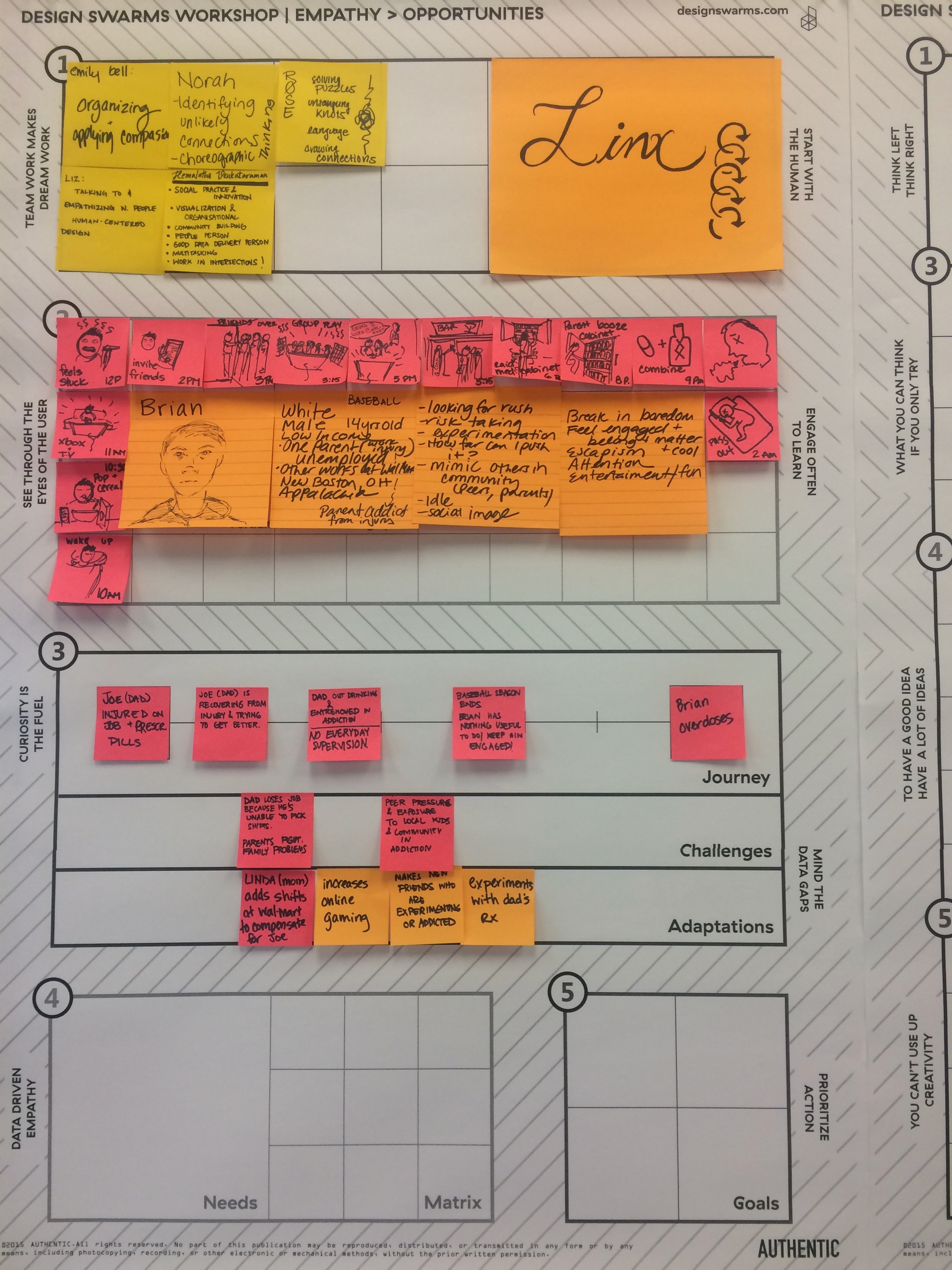
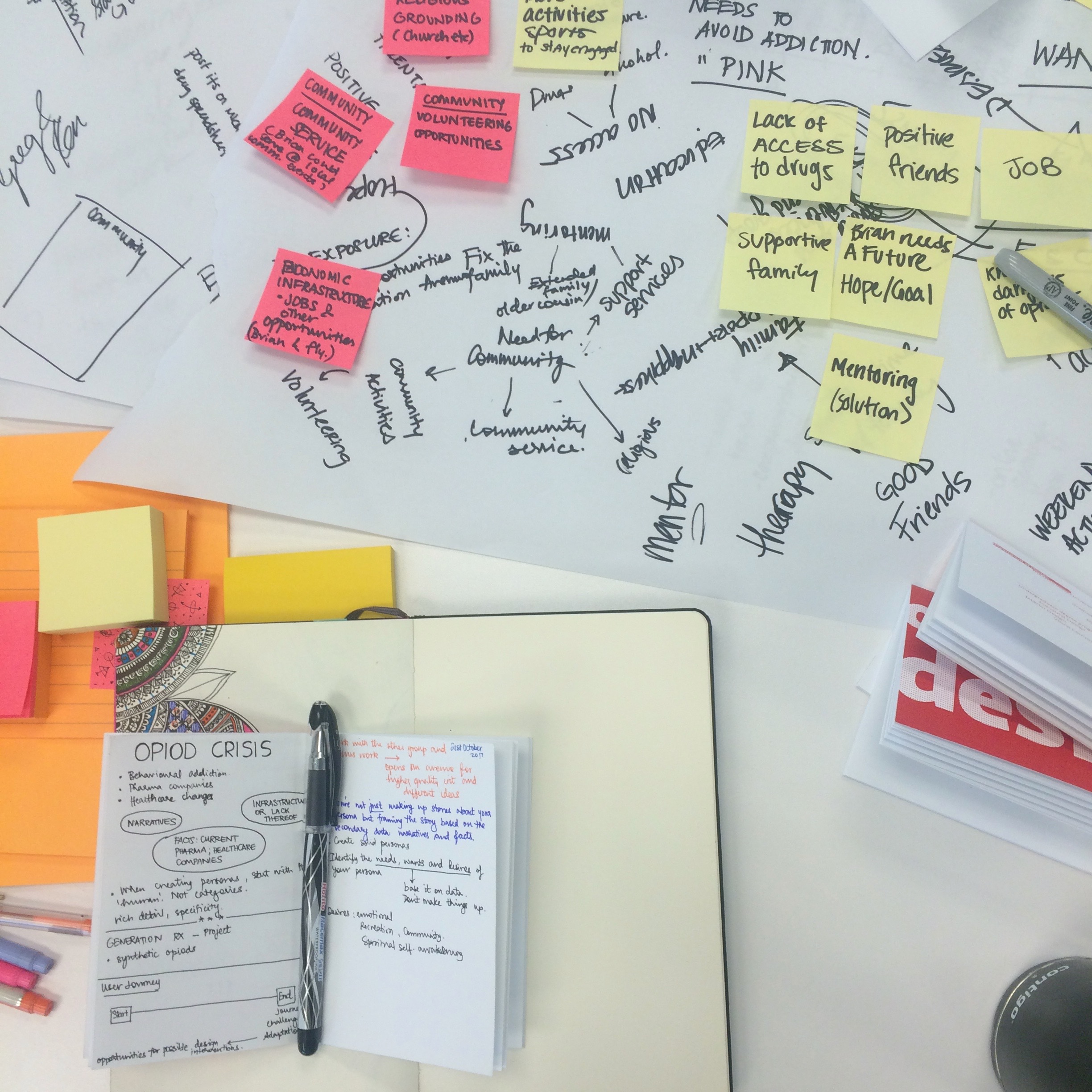

STEP 2 AND 3 : PERSONA DEVELOPMENT
Brian (our persona) is a 14 year old, Caucasian boy from a low-income Appalachian family from New Boston, Ohio. He's a baseball player who doesn't have anything that keeps him engaged during his off-season. His father, Joe, loses his job due to a bad accident and is prescribed medicines; he doesn't take it well and stays out drinking a lot because of this. The family runs on the mother's earnings from two jobs. With parents hardly around, Brian and his friends experiment with the pills and unfortunately mix it with alcohol as well. This leads to his addiction and he overdoses on the pills. He survives the overdose with timely medical help.
Phase 2 of the Design Swarm process pushed us to see the situation through the eyes of the user in order to understand the chain of events, develop empathy, and explore each step; it was done through the creation of one persona and their story of addiction. Important information was culled from the secondary research room, and any development of this phase was based on solid facts and backed up data. We had a few subject matter experts (SMEs) from the fields of design, medicine, and social work who went around the room and offered their expert advice for us to create an effective timeline for the persona's story (Steps 2 and 3 in the above map). This story was later dissected even further by charting it out as 'journey', its challenges and adaptations. 'Challenges' referred to issues that negatively contribute towards Brian's addiction because of his situation. 'Adaptations' refer to how he copes with the said issues.
STEP 4 AND 5: DATA DRIVEN EMPATHY AND PRIORITIZING ACTION
Phase 3 in the mapping process required our team to exercise data driven empathy. We listed the Brian's different needs in his life, and later proceeded to map a 3 x 3 matrix of his most important needs (step 4). Using this as our guideline, we prioritized action plans in terms of goals (step 5). This would allow us to create a larger, main goal later on.
PHASE 2: GOALS > IDEAS
STEP 1: REFINED GOAL
This phase emphasizes on using data driven empathy and using the understanding of the persona's position in order to establish goals for the situation which will later lead to idea generation (Photos below from official event photographer). Our larger goal was 'to create means to prevent Brian's access to drugs' (Step 1).

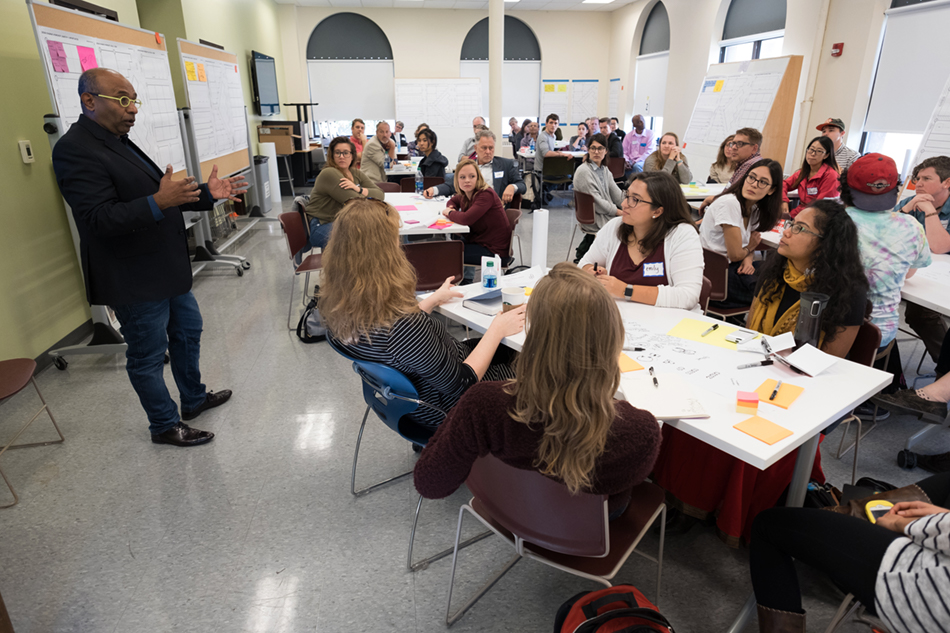

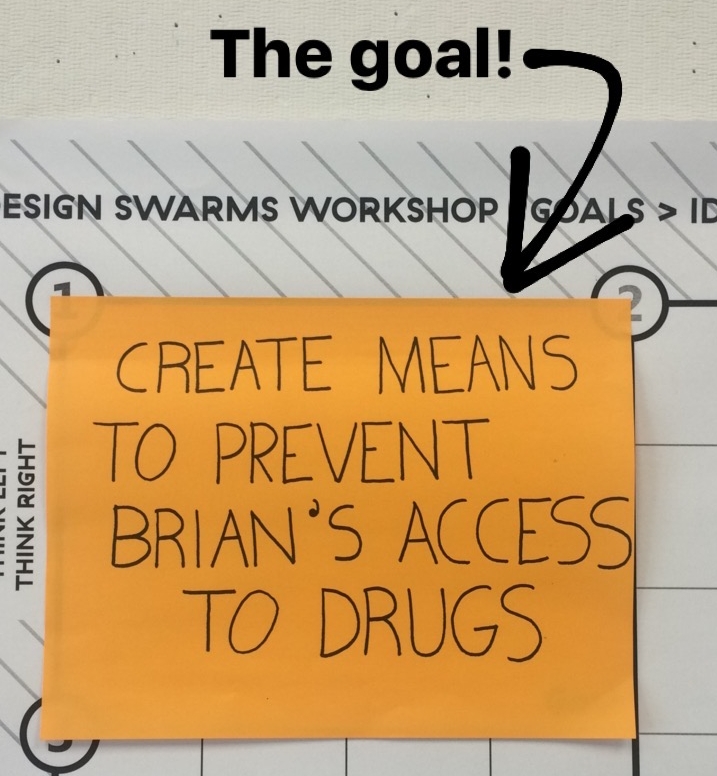


Workshop in progress...
STEPS 2-6: RAPID DESIGN IDEATION
Steps 2-6 was a rapid-fire ideation phase to achieve the larger goal listed in step-1. All of us team members quickly illustrated/wrote ALL ideas that occurred to us. There was limited time, resources, and a lot of avenues which forced us to explore many options. The key at first was about quantity of ideas, to not let ideas simmer before they're recorded but to create a large mind-dump of ideas. The ideas included practical product ideas, systems, speculative ideas, employing design futuring techniques, etc.
STEP 7: HONING IDEAS BY DEVELOPING A FEW
These were further filtered down to lesser number of pursuable and debated ideas (within the team) in step-7. The interdisciplinary interactions, collaborative working and energy helped us produce innumerable first round of ideas.
In the middle of the team working on these options, one member from each team went around to other teams to 'steal' some of the other teams' ideas that we may have missed. This process of competitive yet friendly collaboration offered an enriched ideation experience.
PHASE 3: SOLUTIONS > STORIES
The last phase of the Design Swarm process emphasized on solutions and not the stories, as was the case until this point. The goal is to use these stories to develop a goal and propose solutions for it.
STEP 1: PROPOSED SOLUTION STATEMENT
A written statement of the proposed solution is charted in step 1 followed by how it works charted to the right hand side, through the integration of current systems.



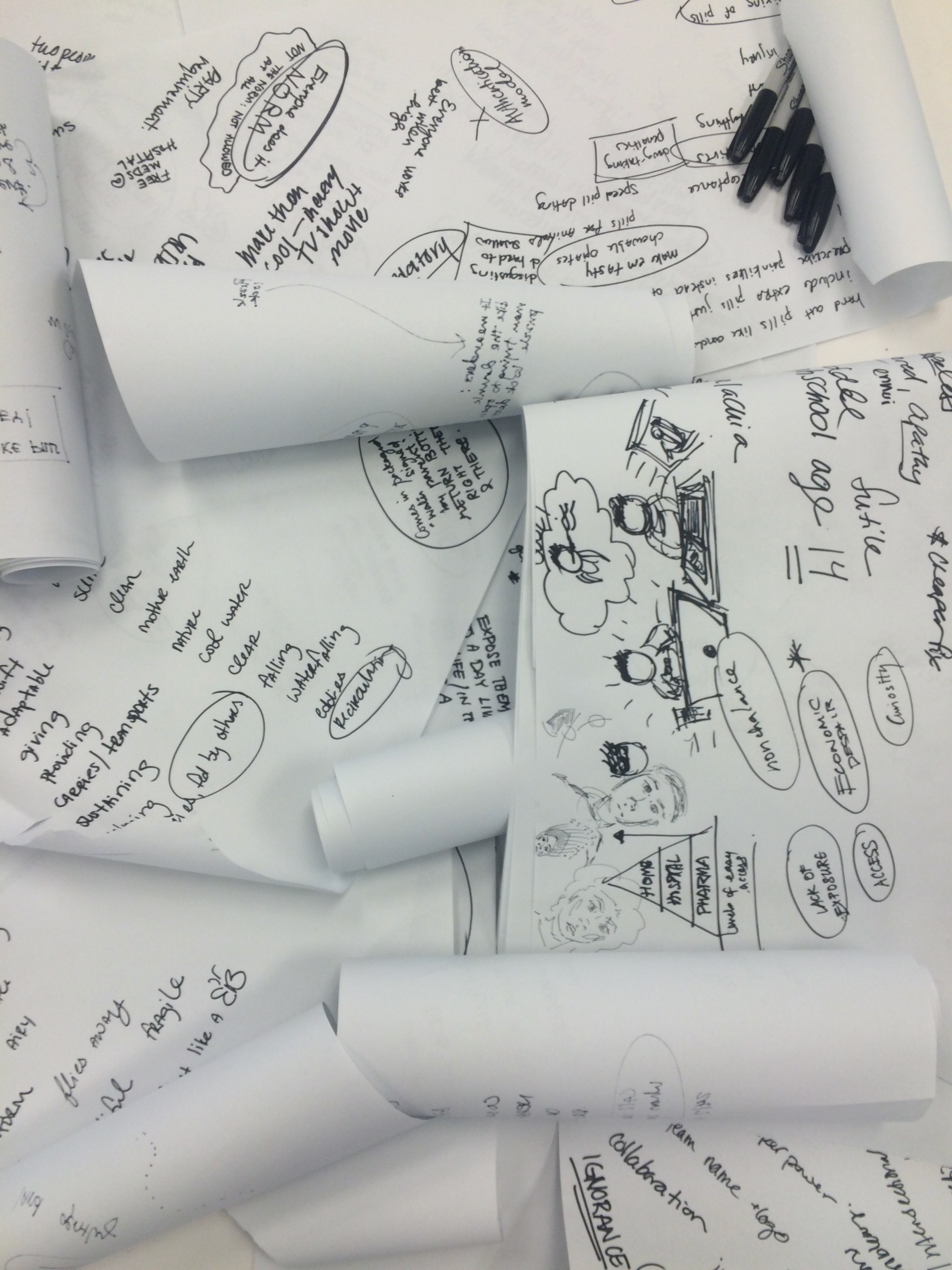
STEP 2: SCENARIO DEVELOPMENT
Through the vivid development of Brian's persona and his story, we were able to generate multiple ideas which was narrowed down to one goal. The solution to this goal was illustrated through a scenario that shows an alternate chain of events because of a new proposed system(see image above for the complete scenario).
STEP 3: THE SOLUTION- PRIMERx BY AMAZON
"PrimeRx by Amazon is a government subsidized prescription delivery service, limits opioid access by ensuring proper consumption by the intended patient via small doses Rx deliveries every two days with required authentication."
Our goal was the integration a new idea to an existing system as developed through the process so that with a little refinement, it can be applied in the real world to tackle Ohio's Opioid addiction. Other teams explored more technological process, products, digital apps, etc. Each team presented their ideas at the end of the process.
LEARNINGS
Interdisciplinary teams, fresh perspectives, team work, and learning to be open to new ideas
Exploring an empathy-driven human-centered process to tackle a complex social problem
A grilling ideation phase that helps us move from 'quantity' to 'quality': allows for more eccentric ideas to surface
Illustration-rich and concise means of data delivery, easily understandable
It was a wonderful opportunity to have been able to work with Mr. Vanka in this workshop setting. There was a lot of new learnings and I believe that the process has pushed me to be a more open, and empathetic design researcher (especially for social issues).








